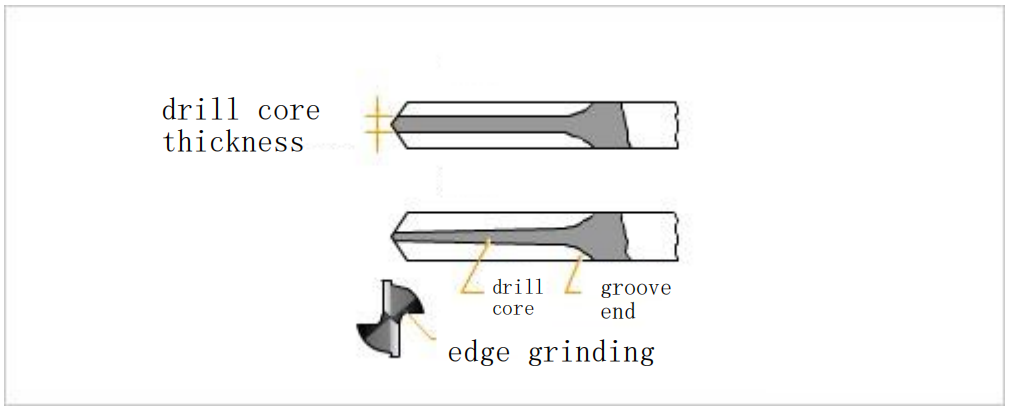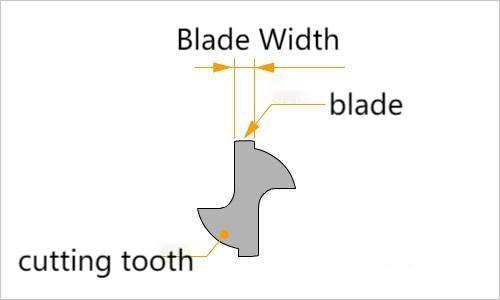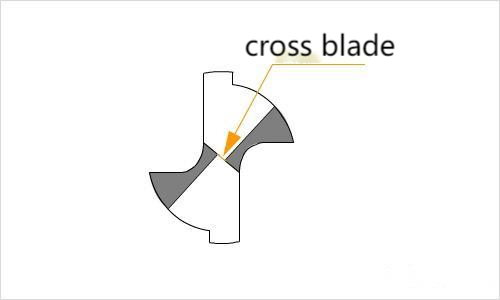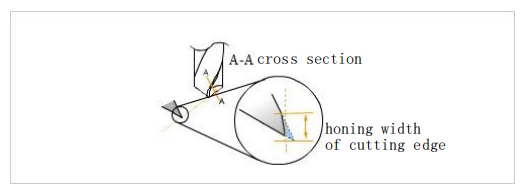
Various components of a drill bit in a CNC machining center.
Overall length
The overall length refers to the measurement along the axis in the horizontal direction, from the peripheral angle of the front cutting edge to the rear end of the tool handle.

Tool body
The tool body is the portion extending from the front end of the tool handle to the peripheral angle of the front cutting edge.

Inverted cone
To prevent friction between the outer periphery of the drill bit and the inner surface of the hole during drilling, the outer diameter near the tool handle is made thinner. This design is referred to as a reverse taper. The larger the reverse taper, the lower the cutting resistance, but it also results in a reduction of the tool diameter, thereby decreasing the number of times it can be re-sharpened.

Hold bar
This is the clamping section for securing the drill bit.

Groove
The groove is located in the recessed area between adjacent cutting edges and the top edge, serving the purpose of chip evacuation. The drill bit groove consists of two spiral grooves, and under a certain rake angle, the groove is specified to have a certain shape, allowing the cutting edge to form a straight line.

Point angle
The point angle is the angle formed by the projection of the cutting edge on a plane parallel to the axis of the drill bit. High-speed steel drill bits typically use a point angle of 118 degrees, while the point angle for carbide drill bits is often in the range of 130 to 140 degrees.

Drill core
The drill core is a unique design located at the center of the drill bit axis, ensuring the rigidity of the drill bit. There are two types of drill cores: parallel and tapered. The thicker the drill core, the greater the torsional rigidity and bending strength. Drill core thickness refers to the thickness of the tip portion of the drill core. Lateral edge honing refers to intentionally thinning a specific portion of the drill core at the tip to reduce cutting resistance at the center of the drill bit. Lateral edge honing reduces the cutting resistance concentrated on the lateral edge, optimizing cutting sharpness and chip evacuation, and plays a role in extending tool life and improving hole accuracy and stability.

Lead
The lead is the distance the cutting edge advances along the axis when the cutting edge revolves around the axis for one complete revolution.

Relief angle
The relief angle is the angle formed between the perpendicular cross-section of the axis on the outer peripheral angle and the back cutting edge. The larger the relief angle, the lower the cutting edge strength at the tool tip.

Coolant hole
Coolant holes can directly supply coolant to the cutting point, resulting in high chip evacuation efficiency, eliminating the need for adjustments to nozzles as required by externally supplied oil methods used in conventional drill bits. Compared to standard externally cooled drill bits, drills equipped with coolant holes demonstrate further improvements in cutting speed and feed rate, effectively enhancing machining efficiency.

Cutting band
The cutting band is the cylindrical portion of the unprocessed second back surface on the blade, serving to enhance dimensional stability. The cutting band width refers to the width of the cutting band on the perpendicular cross-section of the axis.

Cross blade
The cross-cutting edge is the cutting edge in the central portion of the drill bit. The shorter the length of the cross-cutting edge, the better the cutting performance.

Cutting edge
carbide?drill bits require cutting edge treatments based on different purposes. The greater the width or angle of edge grinding, the higher the cutting edge strength, but it also leads to increased cutting resistance.

Understanding the structure and functions of drill bits for CNC machining centers can help users better utilize these cutting tools and ensure optimal machining results. CNC machining centers offer a diverse range of tool types. Once installed, they allow for efficient processing of workpieces through the use of multiple tools from the tool magazine after a single setup.







